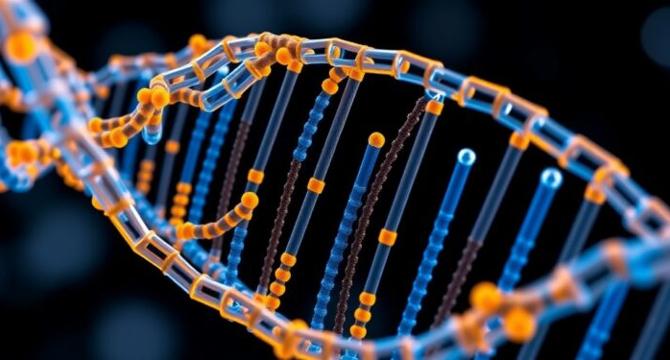Bioengineer
1M
153

Image Credit: Bioengineer
Breakthrough: Completion of Synthetic Yeast Chromosome Paves the Way for Advances in Biotechnology
- In a groundbreaking achievement for the field of synthetic biology, researchers at Macquarie University have successfully created the final chromosome in the world's first synthetic eukaryotic genome.
- The Sc2.0 project is aimed at engineering a synthetic version of saccharomyces cerevisiae, commonly known as baker's yeast. The project's completion offers unprecedented opportunities in biotechnology applications, from sustainable food production to pharmaceuticals.
- Using the innovative CRISPR D-BUGS protocol, the team corrected genetic errors that had previously hindered the growth of yeast strains. These corrections not only reinvigorated the yeast's ability to thrive but also enabled it to flourish at elevated temperatures.
- The successful construction and debugging of the final synthetic chromosome has culminated in the establishment of a powerful platform that could revolutionize how we produce essential goods.
- The insights derived from the positional interaction of genetic markers and the essential genes provide critical insights that establish design principles applicable to other organisms, enhancing understanding of genetic architecture's implications for synthetic biology.
- This synthetic chromosome features advanced elements that allow researchers to generate genetic diversity on demand, accelerating the development of yeasts that exhibit enhanced properties tailored for numerous biotechnological applications.
- The team has provided critical frameworks for future synthetic biology projects, establishing a foundation for engineering plant and mammalian genomes effectively.
- The implications extend far beyond yeast to potentially benefit entire industries, unlocking exciting prospects for developing more efficient and sustainable biomanufacturing processes.
- Such collaborative efforts underline the importance of interdisciplinary cooperation in advancing scientific knowledge and capability.
- The implications of this research will undoubtedly inspire a new wave of synthetic biology initiatives, pushing the boundaries of what is possible and improving the resilience of biological systems in an increasingly uncertain world.
Read Full Article
9 Likes
For uninterrupted reading, download the app